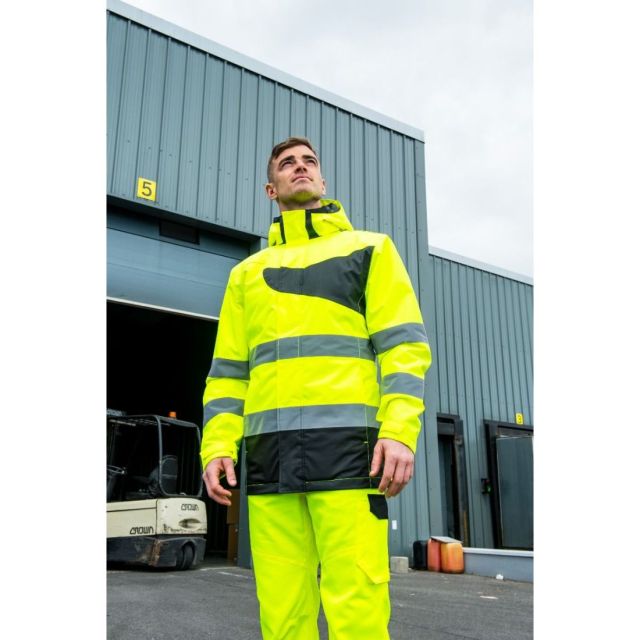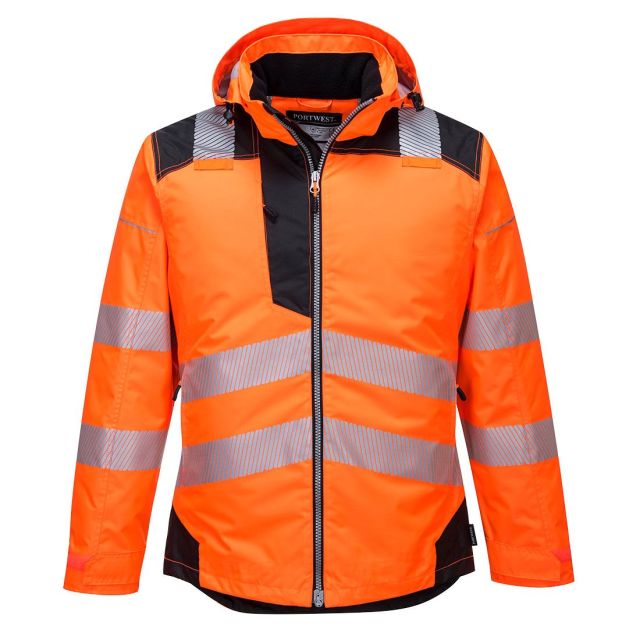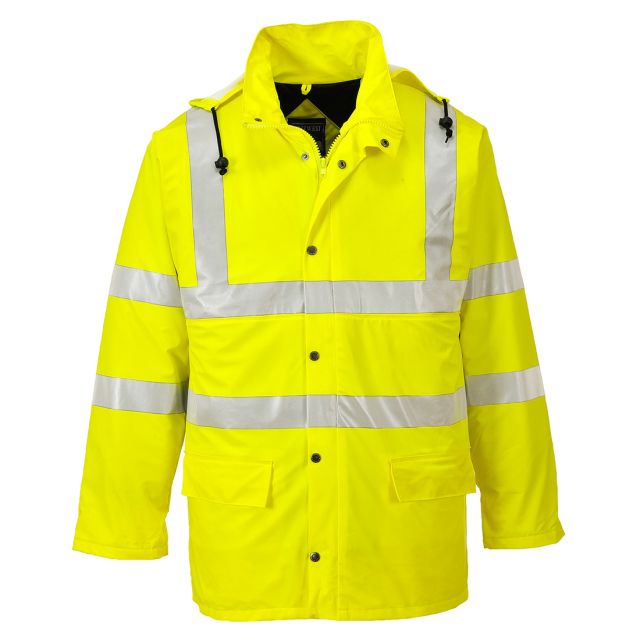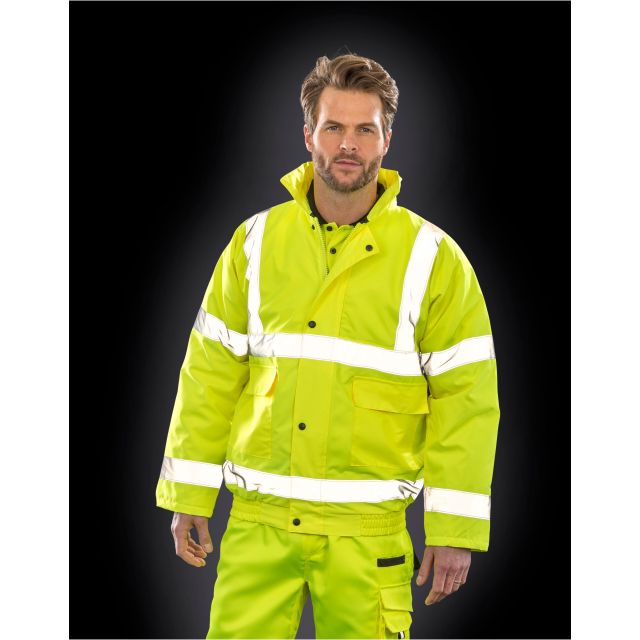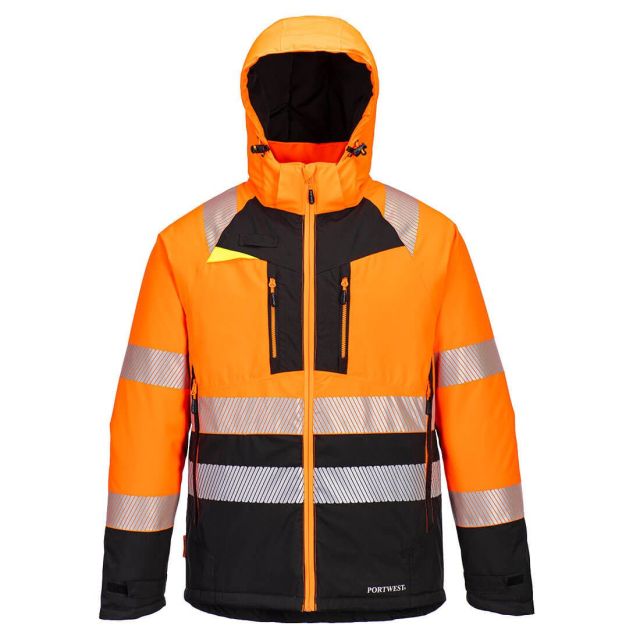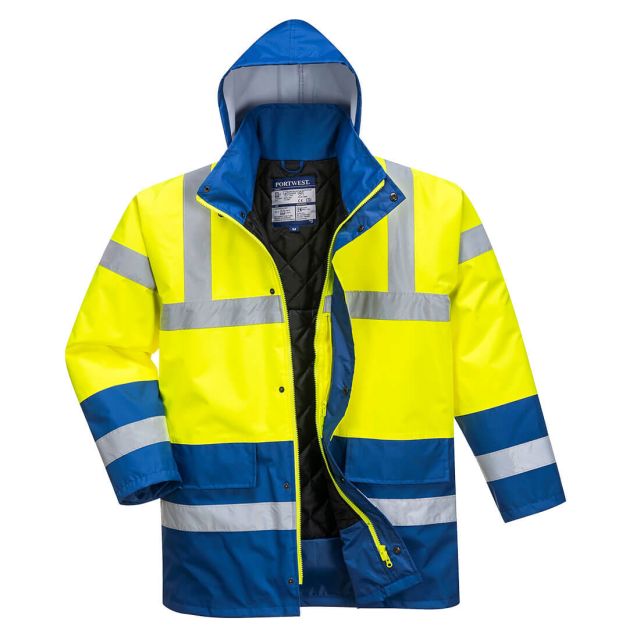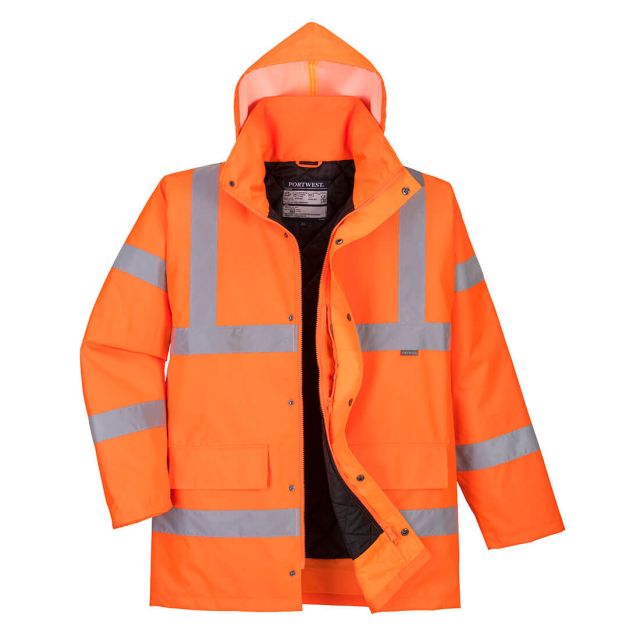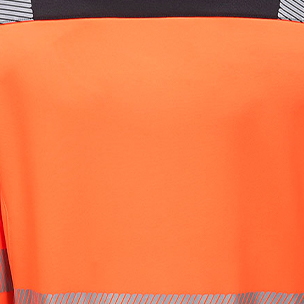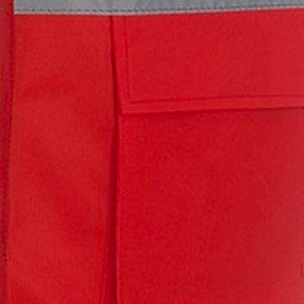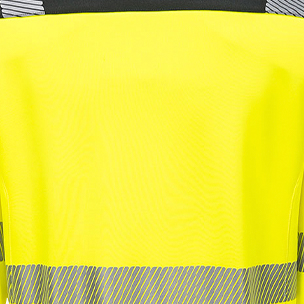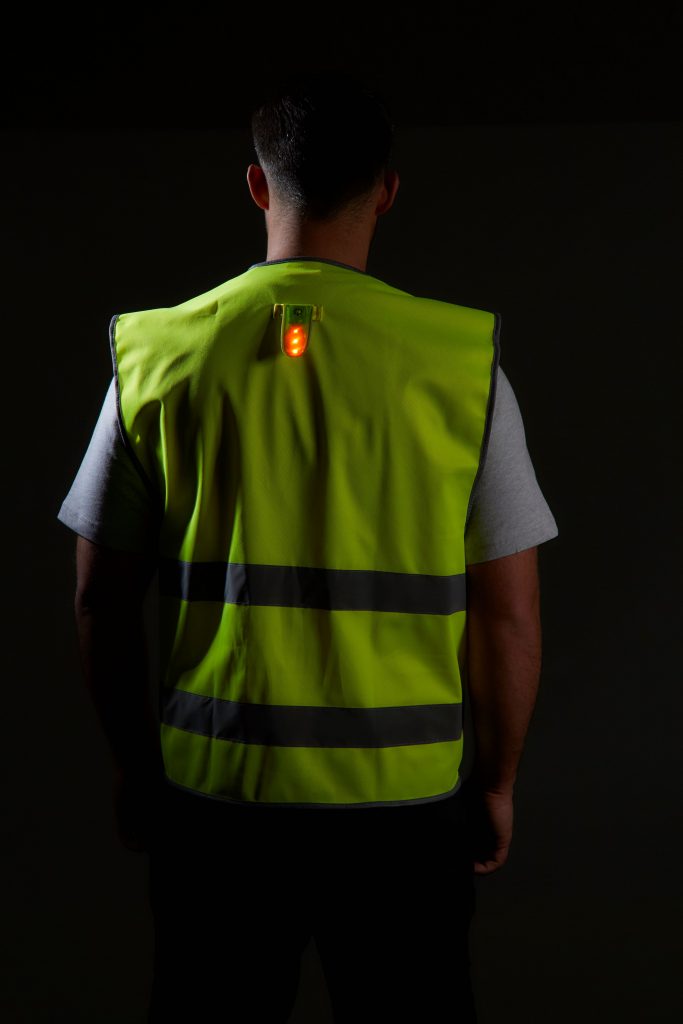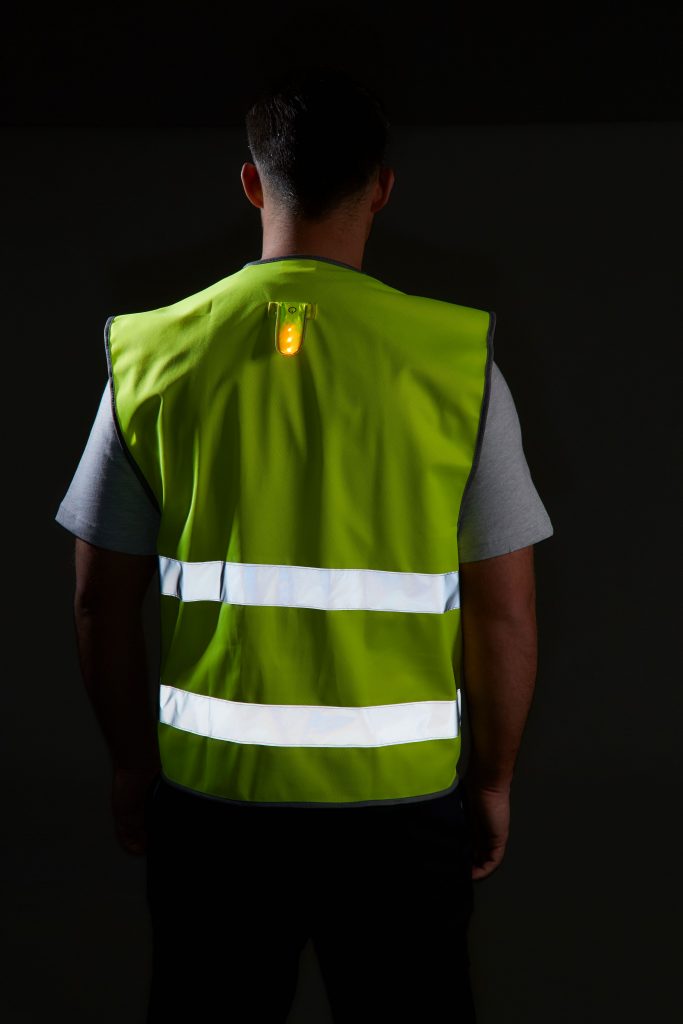Hi Vis Winter Jackets: Essential for Extreme Conditions
Staying visible and protected is essential in the workplace, particularly while working under harsh weather conditions. A winter jacket provide essential protection from extreme weather conditions, ensuring workers' safety, comfort, and compliance with high visibility laws.
In this article, we'll look at the significance of hi vis winter coats & jackets, the key features to look for, and how to strike a balance between safety, comfort, and customised branding while staying compliant with EN ISO 20471.
- Page Contents
- Why Hi Vis Winter Jackets Matter
- Key Features of a Typical Hi Vis Winter Jacket
- EN ISO 20471 Compliance for Hi Vis Winter Jackets
- Customising Hi Vis Winter Jackets: Balancing Branding and Safety
- How Often Should You Replace Hi Vis Winter Jackets?
- XAMAX®: A BSIF Registered Supplier You Can Trust
- Conclusion: Hi Vis Winter Jackets and Coats for Extreme Conditions
Why Hi Vis Winter Jackets Matter
During the colder months, workers experience not just lower temperatures but also reduced visibility owing to fewer daylight hours, rain, snow, and fog. High-visibility coats for winter are especially designed to address these challenges by keeping workers warm and visible.
Protection from Harsh Weather
High visibility winter jackets are designed to protect workers from adverse weather conditions such as cold temperatures, high winds, rain, and snowfall. The combination of insulation and waterproofing keeps workers comfortable and focused on their jobs, which is crucial for both safety and productivity.
Enhanced Visibility in Low-Light Conditions
Winter typically means fewer daylight hours, making visibility a major problem. Fluorescent fabric and retro-reflective stripes on high-visibility winter jackets ensure workers are visible even in low-light environments or when vision is impaired by fog or heavy rain.
According to the Health and Safety Executive (HSE), working in adverse conditions increases the risk of accidents, particularly those involving vehicles or heavy machinery. Hi vis jackets for winter help in minimising these hazards by making workers more visible and more protected from the weather.
Key Features of a Typical Hi Vis Winter Jacket
When choosing high-visibility winter jackets for team members, look for features which combine both safety and comfort. The right coat will keep workers warm, dry, and visible no matter how terrible the weather.
Waterproofing and Breathability
Waterproofing is critical for winter jackets, especially when workers are subjected to rain, snow, or ice. A good high-visibility winter coat should have fully sealed seams and water-resistant zips to keep moisture out.
At the same time, breathability is essential for preventing overheating. Look for coats or jackets with breathable fabrics that allow sweat to wick away and evaporate while keeping water out. This balance ensures that workers are comfortable even while doing physically demanding tasks.
Insulation and Warmth
The main goal of a winter coat, hi vis or otherwise, is to keep workers warm. Look for a jacket with thermal insulation or fleece linings that provide warmth without adding too much additional weight. Some feature removable liners, which allow workers to adapt to changing temperatures throughout the day.
Reflective Tape and Fluorescent Fabric
Hi Vis Winter clothing must meet the EN ISO 20471 visibility standards. This means they must have both fluorescent fabric and retro-reflective tape to ensure workers are visible in both daytime and low-light conditions.
For a Class 3 hi vis winter coat, the following is required:
- 0.80 m² of fluorescent material.
- 0.20 m² of reflective material, with reflective tape placed around the torso, arms, and shoulders.
Hood and Collar Design
Jackets with adjustable or detachable hoods are ideal for keeping workers’ heads dry and warm. A high collar adds extra protection against wind and rain, ensuring that workers are protected from the elements even in the harshest conditions.
EN ISO 20471 Compliance for Hi Vis Winter Jackets
All hi-vis winter outerwear must meet EN ISO 20471, the European standard for high-visibility clothing. This ensures the workforce is visible in any conditions, including low light, poor weather, and proximity to moving vehicles or machinery.
Fluorescent Material
Fluorescent fabric was developed to make workers stand out in daylight or under artificial lights. EN ISO 20471-approved yellow and orange colours are used to create a stark contrast with the environment, making workers easier to spot.
Hi vis jackets need to contain at least 0.80 m² of fluorescent material to meet Class 3 compliance (the greatest level of visibility).
Retro-Reflective Tape
Reflective tape on high-visibility winter outerwear keeps workers visible at night or in low-light settings when a light source shines on them. To ensure full visibility, it should be positioned around the torso and sleeves, covering at least 0.20 m² of the coat.
A Class 3 coat needs to have reflective strips on the arms and shoulders that provide 360-degree visibility, ensuring the workers can be seen from every direction.
Customising Hi Vis Winter Jackets: Balancing Branding and Safety
Adding your company’s logo to hi vis winter coats is an excellent way to promote your brand, but it’s important to ensure that custom printing doesn’t interfere with the coat’s visibility and compliance with EN ISO 20471.
Custom Printing and Compliance
When adding a logo, you need to ensure it doesn’t cover too much of the fluorescent fabric, as this can reduce the coat’s visibility and make it non-compliant.
For example:
A Class 3 high visibility winter coat requires 0.80 m² of fluorescent material. If a large logo takes up 0.10 m², the remaining fluorescent area may be below the threshold, making the coat non-compliant.
To avoid this, logos should be placed in non-critical regions, such as contrast panels, or reduced in size or coverage, so they won't interfere with the coat's overall visibility.
Embroidery for Professional Branding
For a lasting and professional appearance, embroidery is an excellent choice, unless havining waterproofing is essential. Embroidered logos create a high-quality finish that withstands hard working conditions while maintaining visibility. Embroidery is often smaller than printing, making it more likely to comply with EN ISO 20471.
How Often Should You Replace Hi Vis Winter Jackets?
As with any other high-visibility garment, a hi vis jacket will eventually wear out over time and use. Fluorescent fabric can fade and reflective tape can lose its reflectiveness as a result of exposure to severe weather, frequent washing, and wear and tear.
Signs that it’s time to replace a hi vis winter coat
- Faded fluorescent fabric, reducing the wearer’s visibility.
- Cracked or peeling reflective tape, which no longer reflects light effectively.
- General wear and tear, such as torn seams or worn zips.
As a general rule, hi vis winter jackets should be replaced after 25 washes or sooner if they show visible signs of damage. Portwest offer many hi vis products that can withstand up to 50 washes - make sure you check the information that comes with the garment and regularly inspect your workers’ jackets to ensure that they remain safe and compliant.
XAMAX®: A BSIF Registered Supplier You Can Trust
At XAMAX®, we provide an extensive range of high-quality, compliant hi vis jackets for winter designed to keep your workforce safe, warm, and visible in severe conditions. As a BSIF (British Safety Industry Federation) Registered Safety Supplier, we ensure that all of our products conform to the highest standards, including EN ISO 20471 compliance.
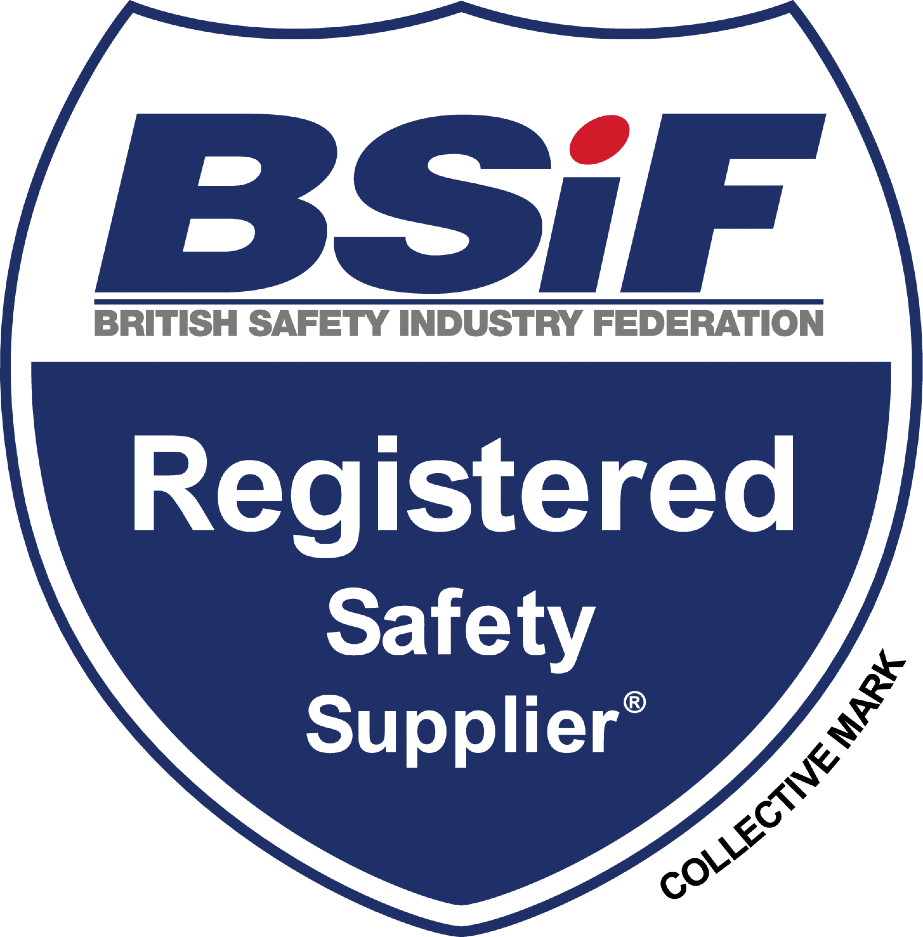
Whether you need parkas, bomber jackets, or winter coats, we provide unique branding solutions, such as printing and embroidery, to help promote your brand while keeping your employees safe.
We offer a broad selection of workwear suited to all weather conditions. Whether it’s extreme cold or warm environments, explore the XAMAX® homepage to find the right gear for your team.
Conclusion: Hi Vis Winter Jackets and Coats for Extreme Conditions
When working in extreme weather conditions, a hi vis winter jacket is essential for both safety and comfort. These ensure that workers are visible in poor lighting and protected from the cold, wind, and rain.
By choosing a hi vis winter coat that complies with EN ISO 20471 and adding your company’s logo through custom printing or embroidery, you can keep your team both protected and on-brand. With XAMAX®, you can trust that your hi vis winter jackets will meet the highest safety standards while showcasing your business.








